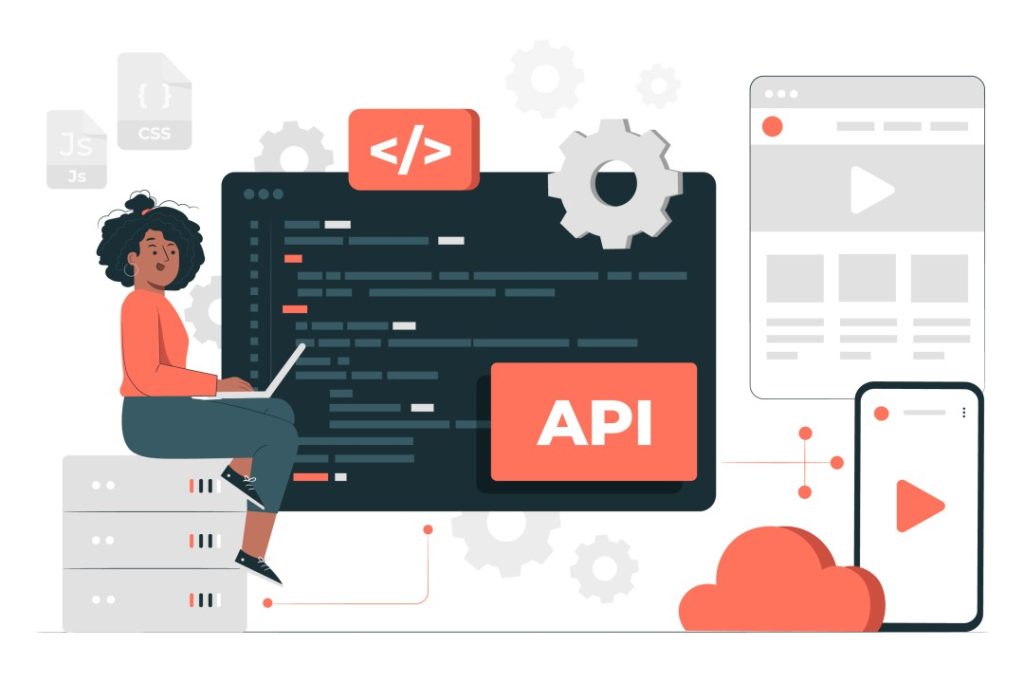In an era of rapid technological evolution, maintaining a leading edge in customer service requires more than just a friendly voice over the phone or a welcoming storefront. Today’s businesses need to deliver superior experiences across a myriad of platforms to truly connect with their customers. One critical tool in achieving this seamless customer engagement is the effective development and implementation of Application Programming Interfaces (APIs).
The Power of API
APIs are the backbone of modern online interactions, yet its power often goes unnoticed as it works behind the scenes to create a seamless and integrated online experience.
Bridging the Gap
At its core, an API acts as a bridge between disparate systems, allowing them to communicate and interact in a streamlined manner. This means that when you use an app to log in to a service using your social media credentials, or when you search for flights in a travel aggregator, you are in fact leveraging the power of APIs.
Enhancing Integration through APIs
APIs are also critical in enabling businesses to integrate their services with external platforms, which subsequently enhances their reach and user convenience. This compatibility ensures that a customer using a specific platform or device does not face limitations in accessing the full range of services offered by a business. Here, the role of effective API Development Services becomes pivotal in determining how well these integrations work.
The Influence and Impact on Customer Experience
Although behind-the-scenes, the technical complexity of APIs are masked by the profound and clear impact they have on customer experience. APIs have become integral in shaping and enhancing the overall user experience.
The Power of Personalization
APIs allow businesses to delve into abundant data repositories, making available a wealth of customer information. Businesses can utilize this to tailor their services to specific customer demands and preferences. This helps in curating a customer journey that leans into personalization, affording each user a unique experience that resonates directly with them. This heightened level of personal engagement invariably leads to increased customer satisfaction, as users feel valued, seen, and most importantly, understood.
Amplifying Efficiency
Apart from personalization, APIs also greatly enhance operational efficiency. APIs automate many tasks that would traditionally need manual intervention. They seamlessly interconnect multiple platforms and services, thereby eliminating redundancy and the need for users to duplicate actions across different platforms. For businesses, this HIP (High-Involvement Product) means an upswing in productivity and reliability. This is crucial as it minimizes potential areas of customer dissatisfaction, leading to a more fluid and hassle-free customer journey. Not to mention that the more streamlined and efficient the process, the better the customer experience and satisfaction.
Delineating Future Customer Experiences
In an age where digital connections rule the roost, APIs are more than just a technical tool; they are shaping the contours of our increasingly interconnected reality. As this trend continues, APIs are expected to dominate and redefine customer experiences.
Propelling Innovation through APIs
APIs, in the past, were primarily seen as back-end tools for developers. However, a paradigm shift has now positioned APIs as essential products that can catalyze innovation, in this digitally evolving landscape. This transformed perspective has opened doors to the development of robust, unique, and customer-oriented services. These services, tailored to specific customer needs can foster customer experiences that couldn’t have been imagined previously.
The Importance of Harmonizing APIs
While the potential of APIs holds a lot of promise, it is as essential for businesses to capitalize on these opportunities effectively. One meaningful way to do this is to ensure smooth interoperability between distinct APIs.
Not merely a process of stitching together different APIs, such interoperability enables businesses to leverage APIs from a vast array of services and data sources without any friction.
Enhanced API integration, therefore, becomes the linchpin in crafting cohesive and enriched customer experiences. It creates a synergistic network, enabling different platforms to communicate fluidly. This, in essence, allows businesses to offer a seamless, unified experience to the customers, regardless of the platforms or devices they are using.
Conclusion
In conclusion, effective API development and integration is an integral strategy for businesses seeking to enhance their customer experiences. By allowing seamless connections between systems and driving greater innovation, APIs provide businesses with the power to tailor their services to specific customer needs, creating an environment of efficiency and personalization that is unparalleled. The future of customer experience is clearly being shaped by the power of APIs, and businesses investing in this technological tool will undoubtedly be at the forefront of this transformation.
